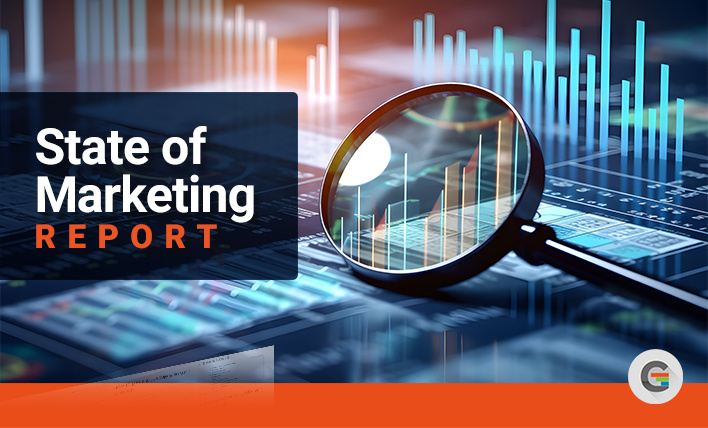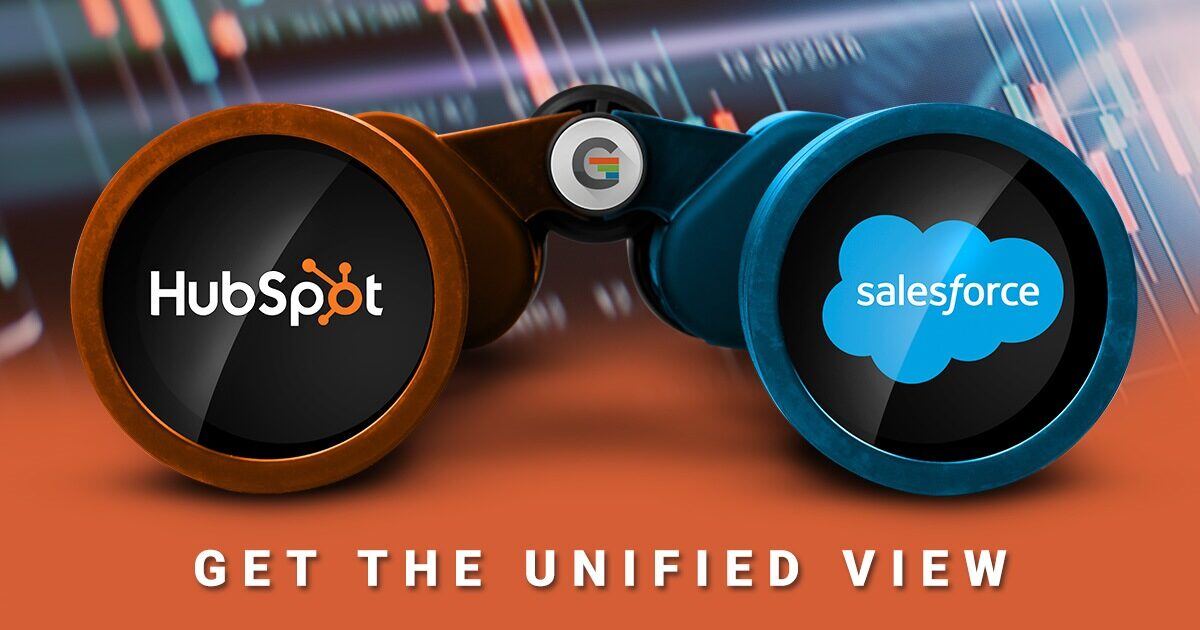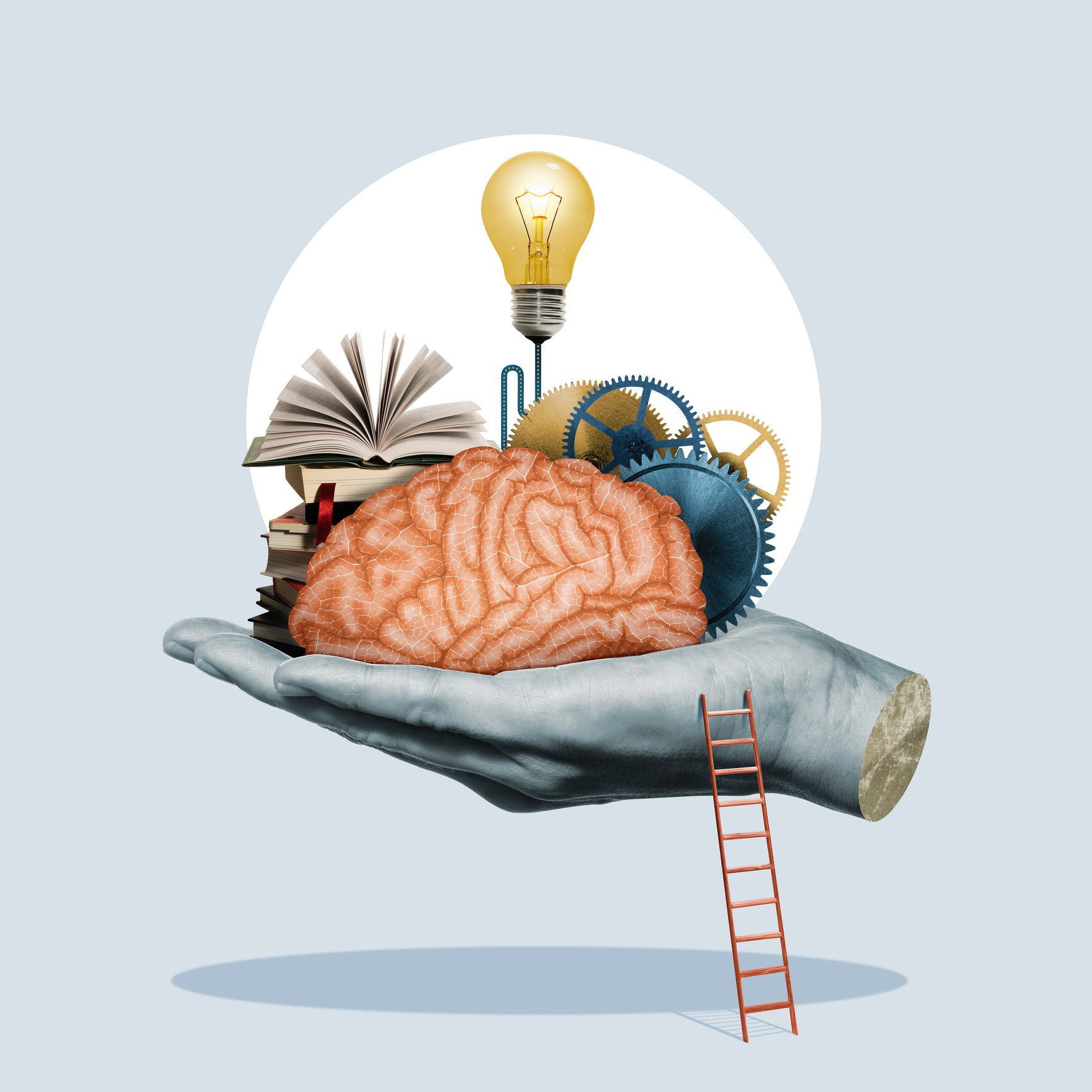Finding Marketing Gold in 2025: Don’t Miss These Five Marketing Shifts Outlined In HubSpot’s State of Marketing Report

One of the best parts of B2B marketing is that it’s so fast-changing. It’s tremendously exciting to see so many ideas and technologies exploding onto the market every day that we can use to drive client revenue.
Our agency has been a HubSpot VAR since 2013, and through all those years HubSpot has rarely failed to impress as one of marketing innovation leaders in creating new and powerful ways to use its software platform. It has also been at the forefront in tracking market conditions and changes marketers should consider, and this year’s recently published State of Marketing Report is no exception.
There’s a lot of meat in there! So to help our clients and B2B marketing friends, here’s a summary of five key changes HubSpot points to, and a discussion of how you can act on them today to improve traction in your marketing plan.
1. The Rise of AI in Marketing
Insight from the Report:
- 63% of marketers predict AI will assist in most content creation today.
Who’s surprised AI is #1? None of us should be, as AI holds tremendous promise for B2B/manufacturers in accelerating the complex buyer journeys we face as marketers. At GGC, we’re pushing beyond powerful and game-changing tools like ChatGPT to begin to incorporate more content and creative outputs, search technology, website improvements and even sales outreach tools. We expect these to improve our targeting, messaging and ability to generate more revenue for clients.
2. Video Marketing Gains Unprecedented Importance
Insight from the Report:
- Video remains the fastest-growing content format, with short-form videos driving significant engagement.
- Platforms like LinkedIn and YouTube are expanding as B2B video hubs.
Why This Matters to B2B Marketing:
Complex machinery and processes are easier to explain through visual storytelling. And video testimonials like GGC’s Zoom Testimonial programs generate powerful and persuasive content that pushes prospects down the funnel. Video offers an engaging way to demonstrate capabilities and build brand trust, and it’s increasingly preferred among today’s decision-makers.
3. Personalization Powers Revenue Growth
Insight from the Report:
- 96% of marketers agree personalization drives repeat business and increases sales.
- Despite its importance, only 35% of marketers feel their customers experience true personalization.
Why This Matters to B2B Marketing:
Personalization isn’t just for B2C—it’s crucial for B2B too. Buyers expect tailored solutions and communications that address their unique challenges.
It’s critical to build required fields into our lead forms that bucket prospects/customers into industry and product categories. Buyers demand relevancy and authenticity today; they’ll be more likely to respond to tailored messaging and crisp comparative advantages that speak to them, whether they hear those messages from you – or from your competitors that deploy segmentation more effectively.
4. Efficiency Fuels Innovation
Insight from the Report:
- 64% of marketers say AI and automation are integral to their workflows.
- Companies using these tools are creating significantly more content while saving time.
Why This Matters to B2B Marketing:
We have to think of AI content this way: it doesn’t just allow us to generate more content in less time, but BETTER content in less time. As mentioned in the prior point, accelerating content production with tailored messaging is an opportunity right in front of B2B marketers. AI can help accelerate that production timeline.
For those using HubSpot, its new Breeze content creation tools are going to be important to learn and incorporate into your work processes.
At GGC, we’re also using a new content cluster planning tool called DemandJump that will help us produce more interrelated clusters to drive our rankings and content authority higher more rapidly.
5. Aligning Sales and Marketing
Insight from the Report:
- Only 35% of marketers report strong alignment with sales teams.
- Companies with integrated systems and shared goals see better ROI.
Why This Matters:
As you can see in the picture here, this tired old truism in sales and marketing that causes more “organizational friction” than anything else we see: marketers ask why salespeople don’t follow up on leads, and salespeople ask when marketing is going to send over leads worth pursuing. This historic misalignment between sales and marketing leads to a big time-suck, missed quotes and ultimately missed revenue.
During 2024, we launched our HubSpot-CRM Integration service, and we’re doing more work with clients to tighten up the crossed wires and process gaps that seem to exist in every organization. Marketing moves too quickly today; there’s no time for ignored opportunities to sit undiscovered and unpursued in the funnel, nor is there time for marketing to generate low quality leads that aren’t worth the sales team’s time.
Simply defining KPIs, lead definitions and lead mapping/routing protocols go a long way toward creating the well-oiled sales and marketing machine you deserve.
We’re also excited about the gains in the market we see for ZoomInfo, one of the most powerful sales enablement software tools we see. A full third of our agency’s core client base today has ZoomInfo powering their sales prospecting, as ZI has reduced its price to make it more relevant for companies below the “enterprise” level. It’s still important to understand though that ZI results don’t typically come from just throwing it over the transom to salespeople to use; it’s better deployed when we use it as a marketing tool not as a sales tool, connected to HubSpot and alert mechanisms.
What They Missed: Google Search and AI
It’s surprising that the report failed to discuss the tremendous impact AI is having on Google search. At the HubSpot Inbound conference, in fact, one of the speakers predicted that Google organic search traffic will decline by 20-25%, meaning that the high quality organic leads that we prize as marketers will tend to decline as well.
Why? The AI descriptions appearing at the top of Google’s own search result pages provide the instant answers today’s searchers want, without having to scroll through links and page descriptions to click around to find an answer AI has already presented. The AI answer is even appearing before our paid search ads.
The HubSpot report points to the rise of social search and Reddit forums replacing some search traffic, and while that’s true for B2C companies, it’s a fringe issue for B2B marketers.
AI has transformed the most valuable real estate on the Internet to be these AI descriptions at the top of Google search. Companies want to be included in those searches, and it’s a matter of time before Google begins selling position in that real estate as a new revenue channel to augment (or replace?) Google Ads. Stay tuned for a seismic shift here as the impact of Google AI search content plays out in real time before us.
Here's the Pivot
It’s a great report from HubSpot, and as usual they’ve done a nice job summarizing what we all see each day. At GGC, it underscores a pivot we’ve been making to our own business.
This is going to be the year of marketing technology more so than ever, where all of us use new tools to make our existing work product more sophisticated. Think of what we’ve been discussing in this report and elsewhere:
- HubSpot launches Breeze AI
- Salesforce launches AI AgentForce
- We’re testing a new tool to identify website visitors to client sites at the individual name level, not just domain
- We’re deploying a ZoomInfo offering on top of our new Salesforce offering
- We’re using DemandJump as mentioned earlier to improve our SEO and Content capabilities
- Google’s throwing lots of AI improvements at paid search planning
That’s a lot, and I think there will be a lot more. It underscores the reality that everyone’s doing the same things in B2B marketing: we’re all doing websites, we’re all doing search, we’re all building landing pages and HubSpot workflows. However, the way you’ll win as a marketer is if you apply all this new technology to those programs in ways that are smarter than your competitors.
No one comes to the marketing department anymore to generate a blog a month and a set of emails and videos – just more marketing “stuff.” They come to marketers to drive revenue. We are surrounded by new technology and AI tools to help us do that. This is a huge opportunity to leapfrog your competitors that are stuck in the past with the old model of content-search-website-workflow deliverables.
More and more, does anyone get the feeling we’re all turning into a software company on top of a marketing department?
Contact us to talk more about how we’re helping others become tech-forward software- and AI-proficient marketers.





